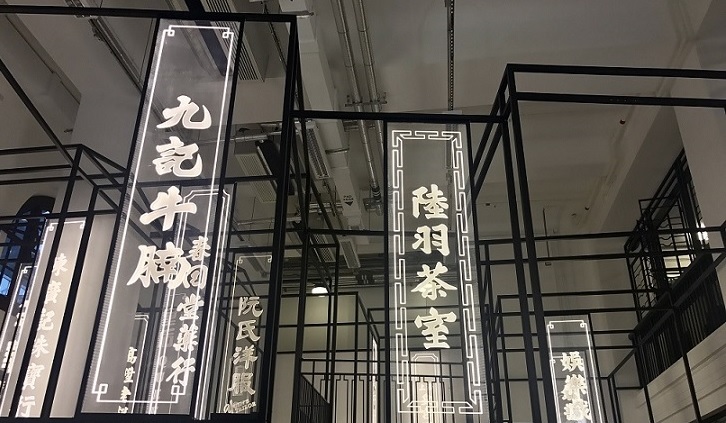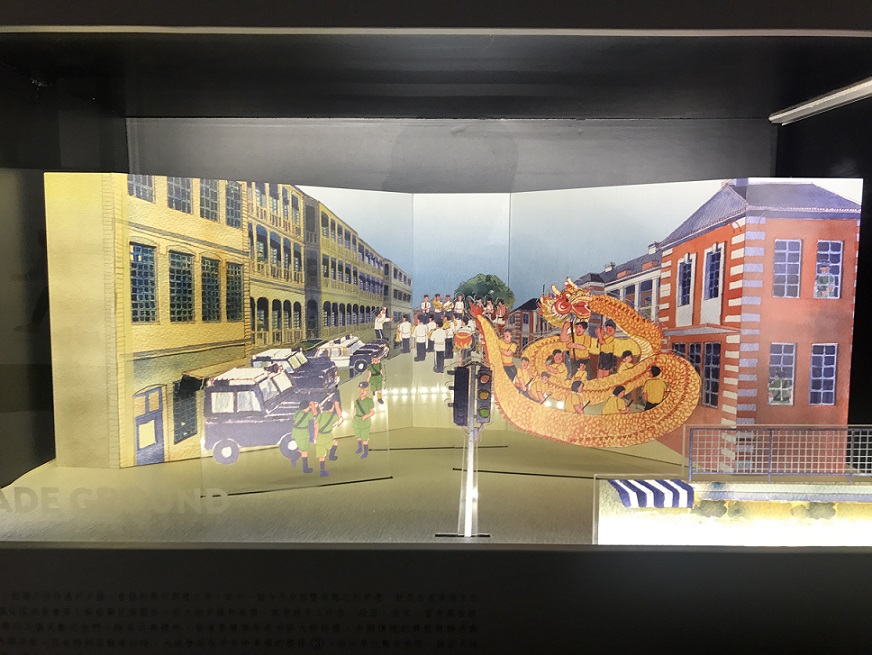藝評
When the bygone becomes the present – on Tai Kwun
鄭秀慧
at 6:26pm on 16th July 2018


Captions:
1. - 2. Installation views of the exhibition ‘100 Faces of Tai Kwun’ at Tai Kwun
3. - 4. Installation views of the exhibition ‘So Wing-Po: Six-Part Practice’ at Tai Kwun
原文以英文發表,題為〈過去在當下 - 大館兩個開幕〉
If history is defined by time, then how could we only have a general historical narrative – the bygone and linear one - in our age?
The dimension of present, visually and conceptually, seems to be dominated by multiple temporal stratum, namely Clouds, drives, web, social media, and archives. Various periods of time are scattered in the constituent of the now time. The present is therefore not a pure now. Not only in the digital horizon, time reveals itself in a multiple manner in our material world.
The recently opened heritage centre - Tai Kwun - is a compound of monuments where remnant of past and the now time reside. The histories of the former Central Police Station Compound are told in contemporary praxis. 100 Faces of Tai Kwun is the inaugural exhibition of the heritage center, said to be the essence of stories of 100 kaifongs in the neighbourhood, the exhibition is trying to recall memories of hundred individuals in the forms of illustrations, reconstructions, and installations. The bygone days come back in a split second when one pushes the buttons below the story-boxes in the exhibition zone one. Illustrations of Flyingpig on the tales of the police compound are put and installed as story-boxes along the two sides of corridor. Intention of create an ambience of time travel in a tunnel/corridor is faintly sensed. However, the effort of over-reconstruction is so overwhelmingly dominated here, the time of bygone reincarnates strangely.
The bizarre inceptions of past in an immaculate present prevails in the inaugural exhibition. Another part of the show, Along the Streets, is an attempt to put diverse memories of individuals about Central District into a recurred animated installation. How could those diverse and fragmented memories be represented by general form of representation? One would ponder. The neon lights of the old stores in Central District cluster next to the animated memories of diverse, the individual memories of Kau Kee Beef Brisket, Luk Yu Tea House… are, therefore, made prosaic. Try to ask different persons who have been to Kau Kee, one may remember the beef brisket, but another one would just have a graphic impression of the long queue in front of the restaurant. Individuality, singularity, sediments of individual time, and humane distinctions are absent in the 100 Faces of Tai Kwun. The 100 faces are represented by one general historical facet.
Residues of histories are haunted on the way from the 100 Faces of Tai Kwun in the Police Headquarters Block to the Tai Kwun Contemporary. Before the Tai Kwun Contemporary, one has to pass through the face-lifted congregations of material histories: the Barrack Block, Central Magistracy, and nexus of prison halls. Designed by Herzog & de Meuron, Tai Kwun Contemporary is a colossal contemporality imposed on the bygone remnant. One of the inaugural exhibitions in the contemporary section is the solo show of So Wing-Po’s Six-Part Practice. Perhaps So realises histories cannot be told in a general dimension, or it is because her personal childhood memory of growing in the area close to Tai Kwun. The memory of her childhood is so personal and unique that cannot be represented by those banalities of old Central. Six-Practice sagaciously deserts the historical framework and stretches to the cosmos.
So grew up five minutes’ walk from Tai Kwun above a traditional Chinese pharmacy founded by her maternal grandfather in 1970s. Six-Part Practice is an assemblage her unique childhood memories in the family pharmacy and the philosophy of Chinese Medicine. The six practices – connection, appearance, emission, suspension, flow, and interior – form a large installation or series of large-scale sculptures. So explores themes of family, childhood memories, and the existence of human in Six-Part Practice.
The artist doesn't try to enforce her versions of nostalgic Central and the traditional images of Chinese pharmacy to the audience. With poetic forms of sculpture, So presents a journey of senses and an analogy of human existence to universe. The connection between inner and outer, flow of energy, and the smell of memories are universe yet individual. Without recreate images of ostensible collection memories - namely hundred compartmental cabinets, Chinese herbs, and a senior-aged Chinese practitioner - the large-scale of sculptures call on the unique individual response with their abstract forms. Diverse responses of audiences are therefore allowed. One would think Part Three: Emission is a mimic of acupuncture or constellation of stars. Another one would find the seemingly-Chinese-herb-smell immerses in the exhibition room bitter or sweet. Letting the singularity reveals in the general flow of history is indispensable. The humane perspective and individuality are precisely what absent in 100 Faces of Tai Kwun, or possibility in most of the renewal and redevelopment projects in the city.
